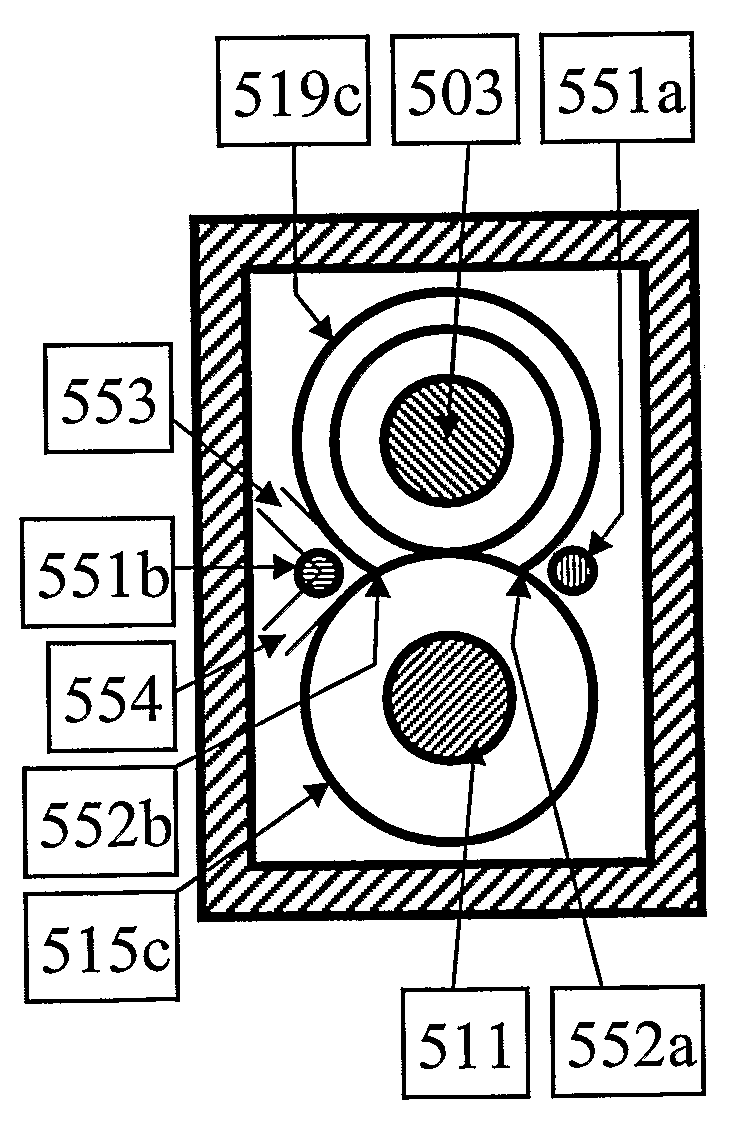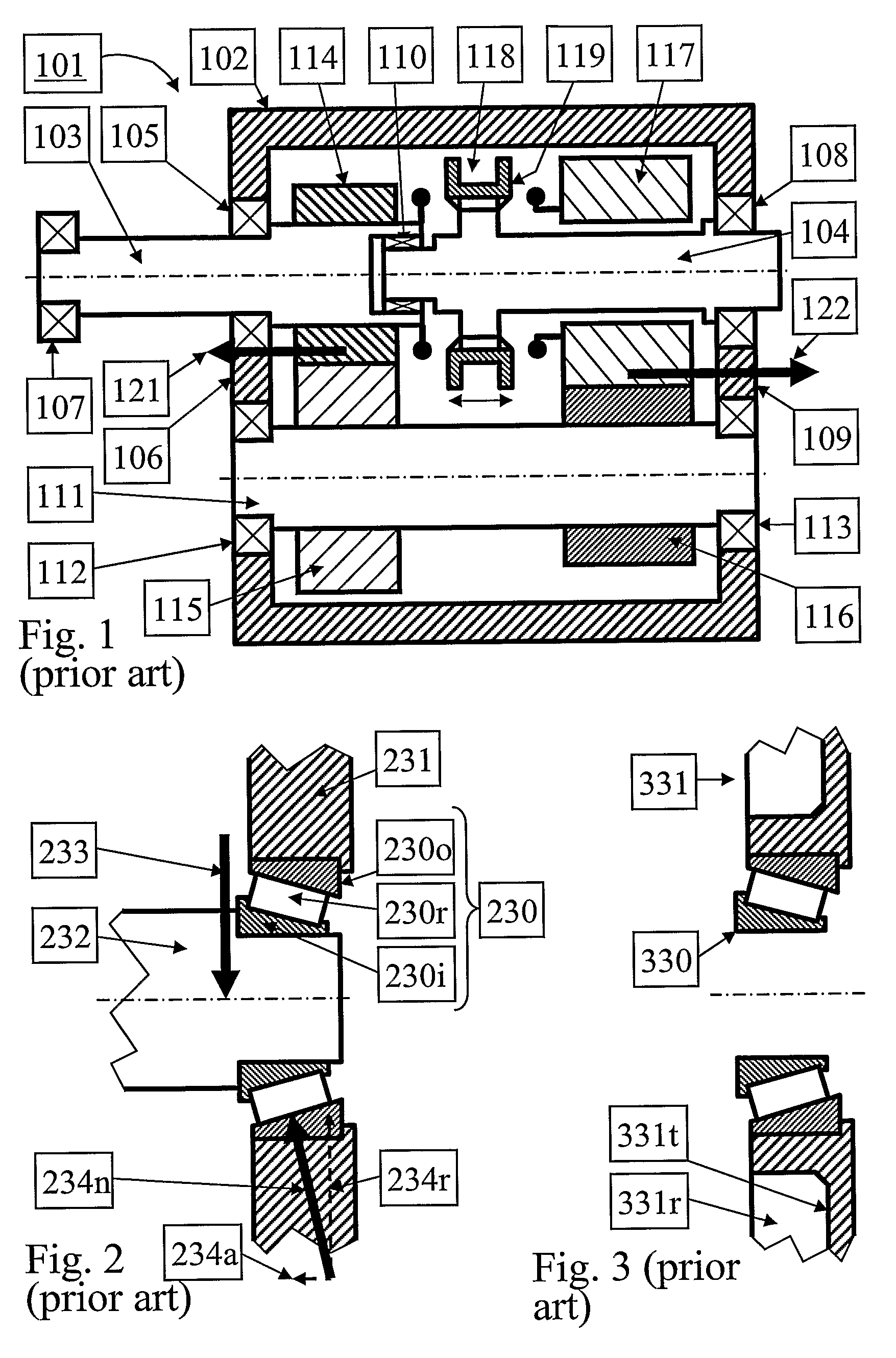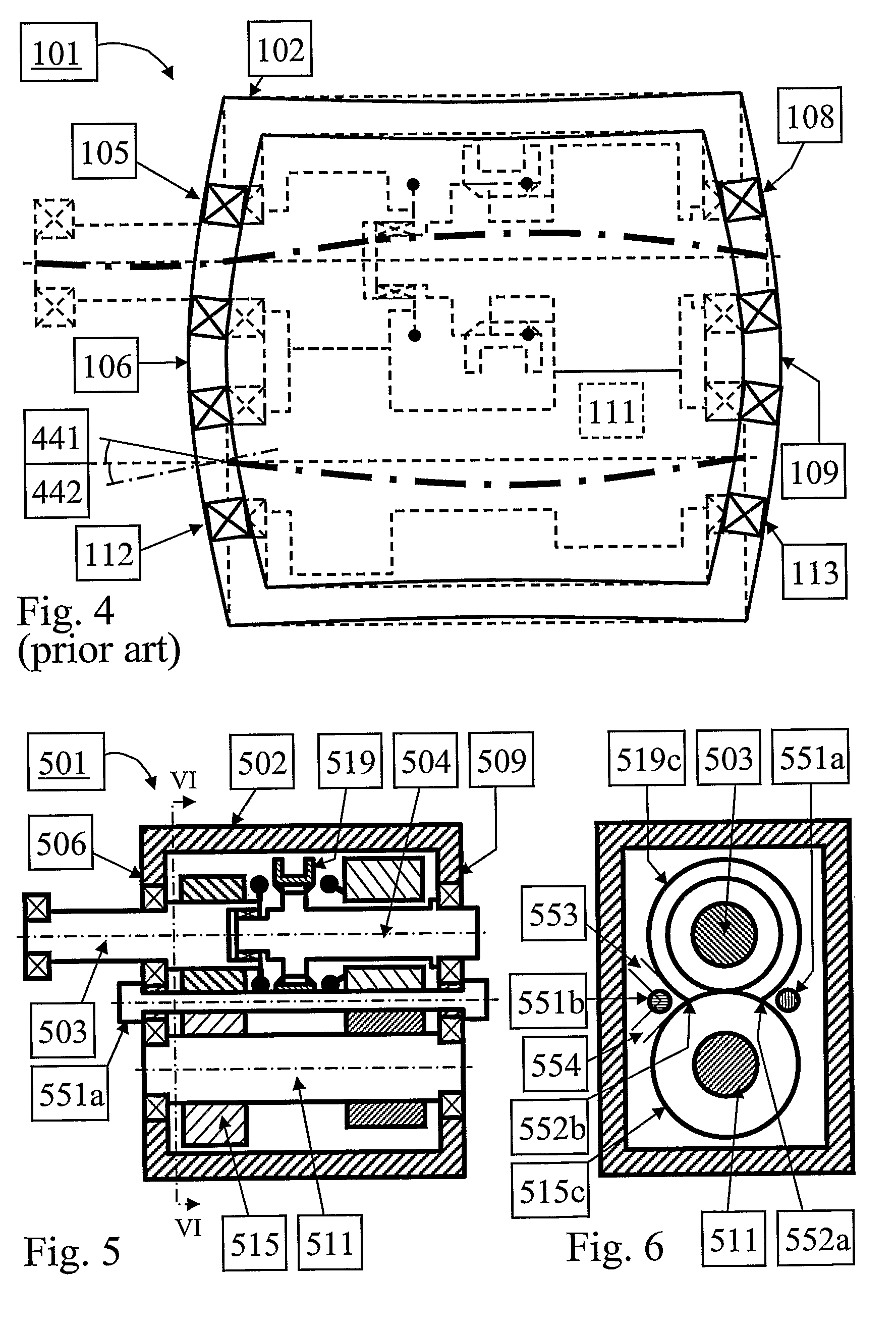Gear transmission with reduced transmission wall housing deflection
a technology of transmission housing and deflection, which is applied in the direction of gearing control, gear lubrication/cooling, gearing elements, etc., can solve the problems of significant gear mesh force, large wall thickness of transmission housing, and low cost-efficient casting methods for light alloys. , to achieve the effect of reducing deflection, facilitating assembly, and eliminating the possibility of lubricating liquid leakag
- Summary
- Abstract
- Description
- Claims
- Application Information
AI Technical Summary
Benefits of technology
Problems solved by technology
Method used
Image
Examples
Embodiment Construction
[0024]FIG. 1 shows a simplified longitudinal section of a fix-axes gear transmission 101 with a transmission housing 102, input shaft 103 and output shaft 104. The transmission housing 102 is here shown as a one-piece unit, but it could also have been composed of two or more housing parts. The input shaft 103 is supported by an input shaft bearing 105, which is seated in a front wall 106 of the transmission housing 102, and by a flywheel pilot bearing 107, which is seated in a prime mover output shaft (not shown). Similarly, the output shaft 104 is supported by an output shaft bearing 108 that is seated in a rear wall 109 of the transmission housing 102. The input shaft 103 is substantially coaxial with the output shaft 104. A second point of support for the output shaft 104 is a pilot bearing 110 that is carried by the input shaft 103. Furthermore, there is a countershaft 111 located radially apart from the input shaft 103 and the output shaft 104. The countershaft 111 is supported...
PUM
 Login to View More
Login to View More Abstract
Description
Claims
Application Information
 Login to View More
Login to View More - R&D
- Intellectual Property
- Life Sciences
- Materials
- Tech Scout
- Unparalleled Data Quality
- Higher Quality Content
- 60% Fewer Hallucinations
Browse by: Latest US Patents, China's latest patents, Technical Efficacy Thesaurus, Application Domain, Technology Topic, Popular Technical Reports.
© 2025 PatSnap. All rights reserved.Legal|Privacy policy|Modern Slavery Act Transparency Statement|Sitemap|About US| Contact US: help@patsnap.com



